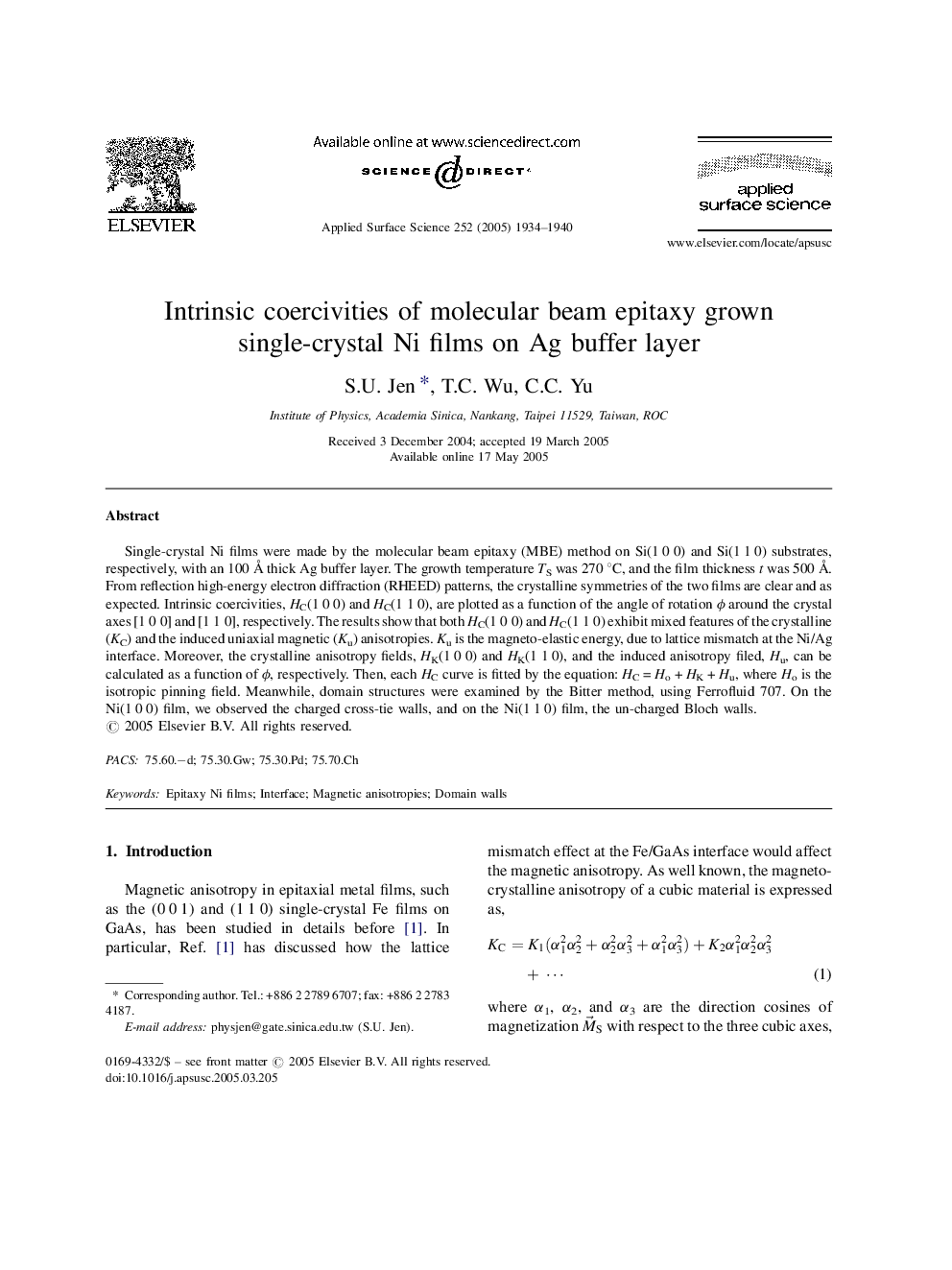| Article ID | Journal | Published Year | Pages | File Type |
|---|---|---|---|---|
| 5370549 | Applied Surface Science | 2005 | 7 Pages |
Single-crystal Ni films were made by the molecular beam epitaxy (MBE) method on Si(1 0 0) and Si(1 1 0) substrates, respectively, with an 100 à thick Ag buffer layer. The growth temperature TS was 270 °C, and the film thickness t was 500 à . From reflection high-energy electron diffraction (RHEED) patterns, the crystalline symmetries of the two films are clear and as expected. Intrinsic coercivities, HC(1 0 0) and HC(1 1 0), are plotted as a function of the angle of rotation Ï around the crystal axes [1 0 0] and [1 1 0], respectively. The results show that both HC(1 0 0) and HC(1 1 0) exhibit mixed features of the crystalline (KC) and the induced uniaxial magnetic (Ku) anisotropies. Ku is the magneto-elastic energy, due to lattice mismatch at the Ni/Ag interface. Moreover, the crystalline anisotropy fields, HK(1 0 0) and HK(1 1 0), and the induced anisotropy filed, Hu, can be calculated as a function of Ï, respectively. Then, each HC curve is fitted by the equation: HC = Ho + HK + Hu, where Ho is the isotropic pinning field. Meanwhile, domain structures were examined by the Bitter method, using Ferrofluid 707. On the Ni(1 0 0) film, we observed the charged cross-tie walls, and on the Ni(1 1 0) film, the un-charged Bloch walls.
